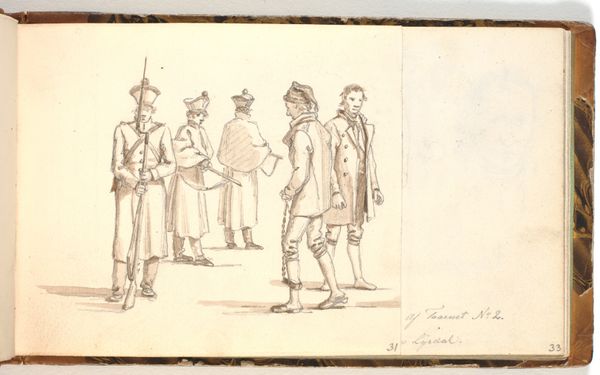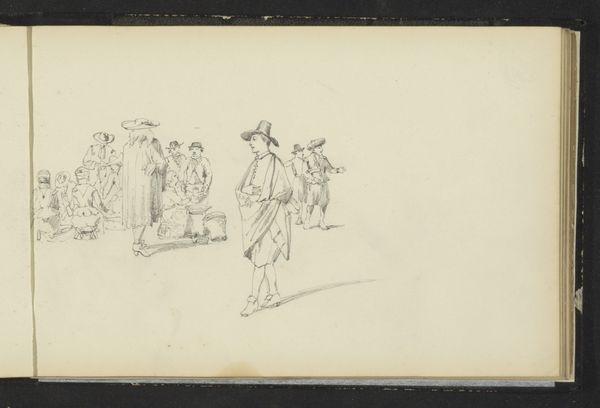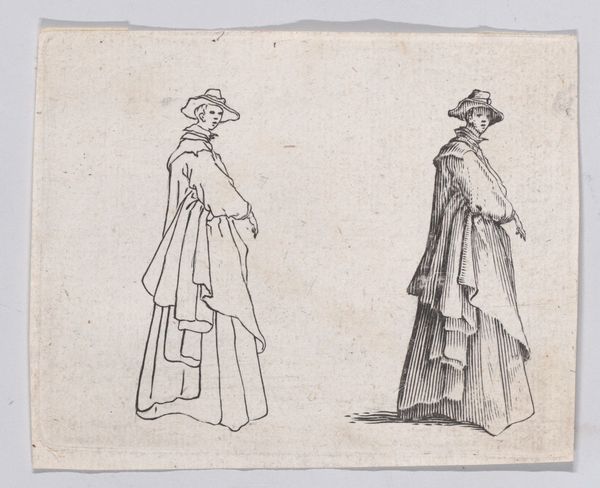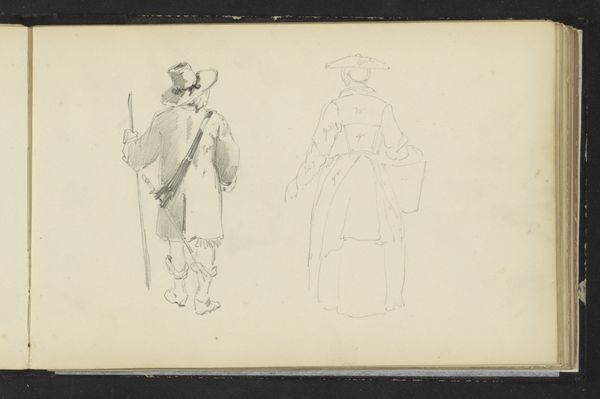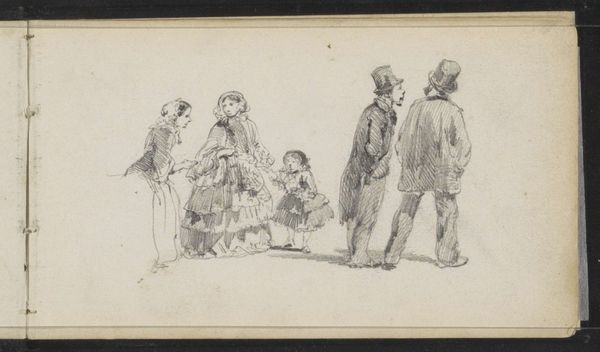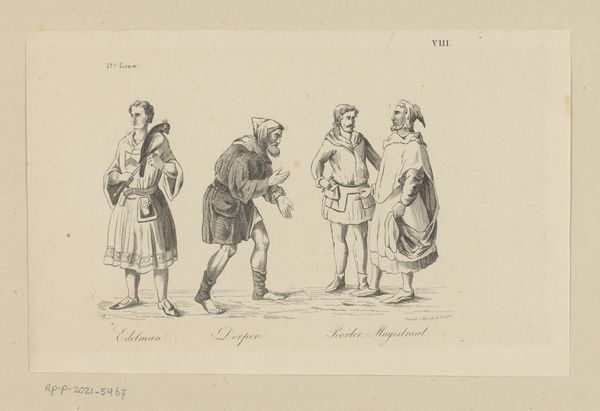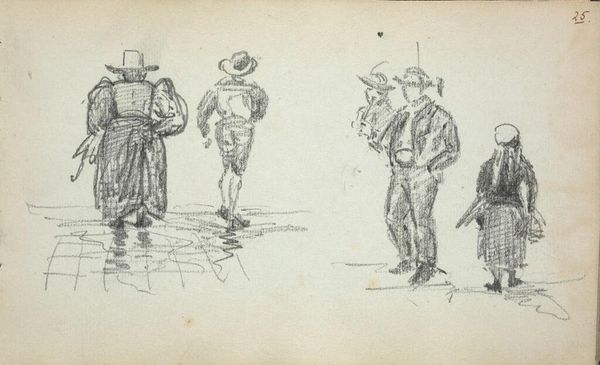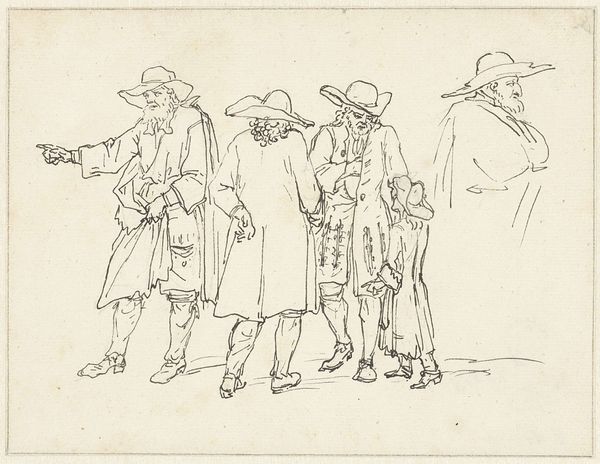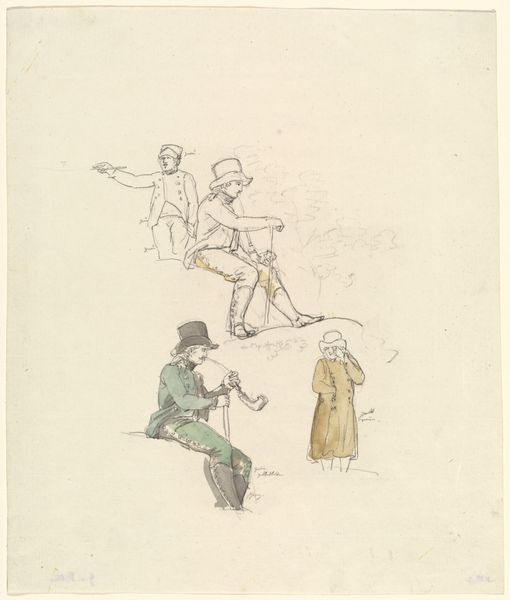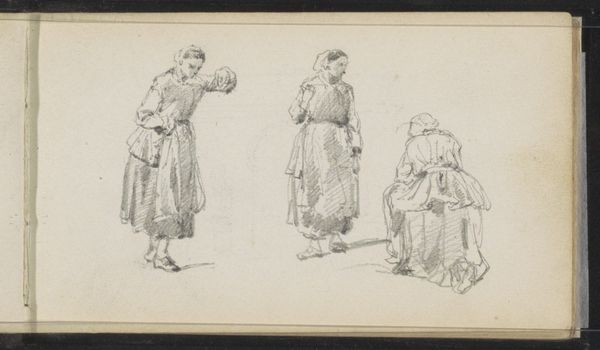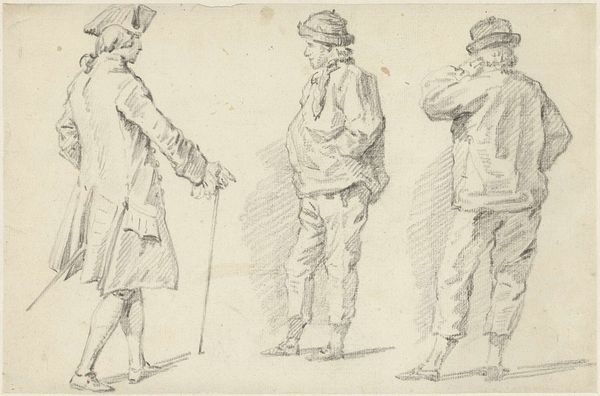
Copyright: Rijks Museum: Open Domain
Curator: What immediately strikes me is the delicate stillness. These figures, rendered simply in pencil, seem caught between eras, frozen in a romantic, almost nostalgic gaze. Editor: You know, my eye is drawn to the way clothing functions as a visual marker of identity here. "Figuren in Zeeuwse kostuums," dating from approximately 1856 to 1861, features these Dutch figures in Zeeland garb, not merely as individuals but as representations of regional belonging, especially the women and how they are presented. Curator: Absolutely. Costume carries enormous symbolic weight. The distinct dress immediately tells a story of cultural heritage. It’s about memory, continuity, perhaps even resistance to homogenization in a rapidly changing world. Notice, for instance, how the artist, Cornelis Springer, carefully outlines the elaborate bonnets and layered skirts of the women. Editor: But what does it mean to idealize regional or national dress during this period? It wasn't simply about preservation, was it? The period of its making marks the rise of nationalism, of constructing very specific identities. Were these drawings, perhaps, made for a more affluent urban audience removed from these coastal traditions? Are they then tinged with a sense of class division or perhaps romanticization? Curator: That’s insightful. There is undoubtedly a tension there. On one hand, you see meticulous rendering, preserving visual details that might otherwise be lost. On the other hand, there’s an undeniable romanticism at play in works from this time period. Perhaps this represents a sanitized version of the everyday lives of the portrayed. Editor: The male figure on the left looks away, excluded in the dialogue. I wonder what a contemporary observer might find looking back from our contemporary moment in this picture and this portrayal. Does it function as propaganda or document? Perhaps the work is suspended somewhere in between those poles. Curator: Indeed, that ambiguity is exactly what makes it so fascinating. Springer invites us to see, and perhaps subtly question, the symbols and costumes we inherit, and that is always welcome. Editor: Yes, it offers such an invitation to interrogate history's layers and understand the stories garments tell in the grand theater of cultural expression, inviting self-reflection and historical awareness in contemporary terms.
Comments
No comments
Be the first to comment and join the conversation on the ultimate creative platform.

